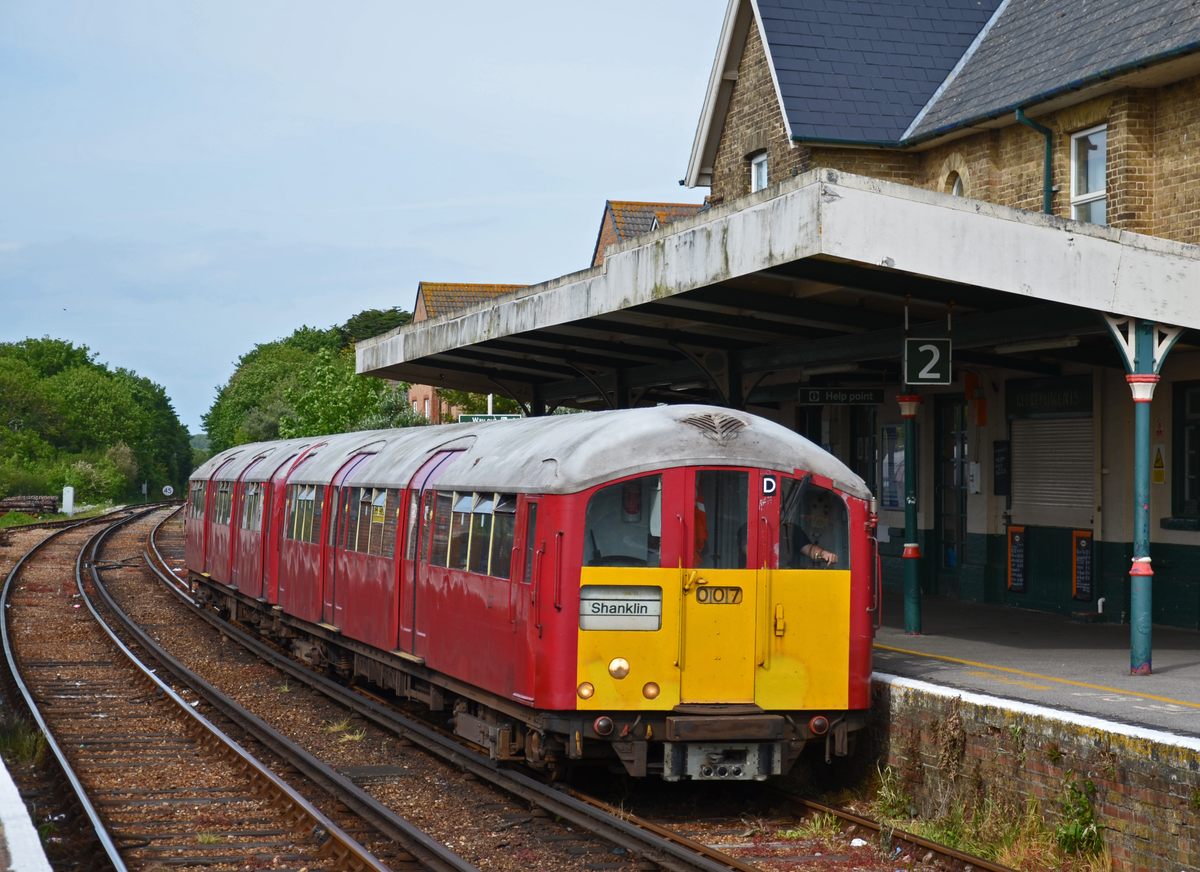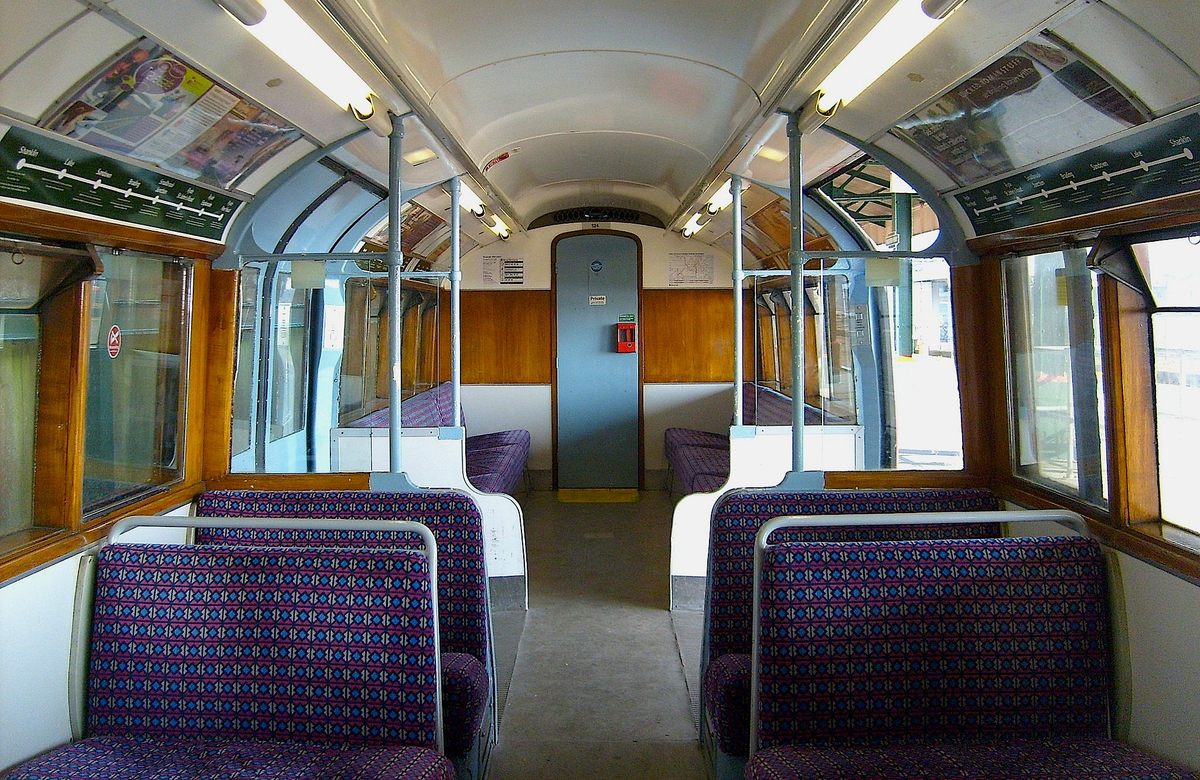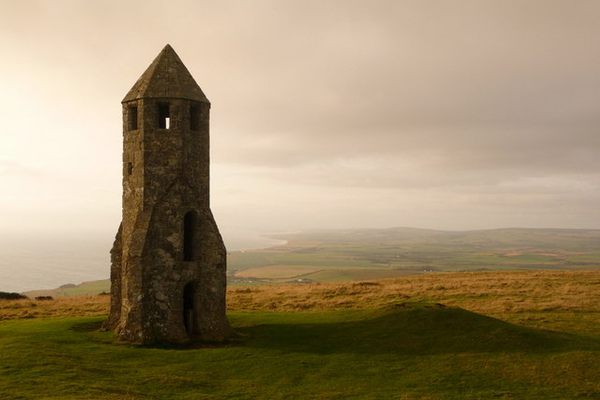
London’s Retired Tube Trains Live on an Island
Vintage rail cars hide in plain sight on the Isle of Wight.
Though it lies just a few miles off England’s southern coast, the curious, diamond-shaped Isle of Wight seems to exist in another era entirely. Once a beloved vacation destination for Victorian visitors, the island – still reachable only by boat from the mainland—remains a British family holiday favorite that capitalizes on the kitschy seaside charm of yesteryear.
But the end of an era on the Isle of Wight is approaching. The island’s train line, whose rolling stock has consisted exclusively of former London Underground carriages from the 1930s, is undergoing its biggest transformation in a generation.

Taken out of service in London in 1988, these Tube cars were moved to the Isle of Wight’s Island Line to see out their final days, which made them Britain’s oldest passenger trains in regular operation. But after 82 years of service, the time for retirement has come. In true Isle of Wight style, the decade dial is stuck somewhere in the past. From April 2021, the Island Line’s vintage 1930s fleet will be replaced with “new” trains—former Tube carriages from the 1980s.

“The Island Line is not a museum and yet was operated by trains that are several decades older than can be found anywhere else on the network, and older even than much of the stock on many heritage railways,” says Richard Long, author of Ryde Rail: A History of Tube Trains on the Isle of Wight.

The use of London Underground trains on the Isle of Wight can be traced back to a single tunnel. The island was one of the last places in the country to operate steam trains, which ran until 1967. As part of the electrification overhaul, the trackbed in a tunnel in Ryde, at the line’s northern end, was raised to prevent flooding. This seemingly minor change decreased the clearance of the tunnel by 10 inches, meaning British Rail’s standard-size trains would no longer fit through. Seeking smaller alternatives, the government found the perfect option in a place where space is at a premium: the London Underground. The 1938 trains—Class 483 Electric Multiple Units, to give them their proper post-Underground name—were the second set of former Tube cars introduced to the Isle of Wight; the first Tube trains used on the Island from 1967 to 1992 were called Standard Stock, built in the 1920s.
With bright bauxite-red livery, metal- and teak-trimmed interiors and manual tip-out windows, the 1938 carriages were classic Art Deco. But soon style would be swapped for stamina.
“The ’38 Stock is the last train that you might describe as pretty inside,” says Chris Nix, Assistant Director for Collections and Engagement at the London Transport Museum. “I’m going to get hate mail for saying that.” After this generation of Tube trains, he says, “a lot of the fixtures and fittings become more functional and are designed to stand up to abuse rather than being attractive.”

Before arriving on the Isle of Wight, the Class 483s were refurbished and stripped of some of their original ornate features to make them more durable. But if you missed the chance to ride in one of the 1930s carriages on the Isle of Wight, the London Transport Museum is home to the best remaining example, acquired with the original Art Deco fixtures in situ, including waxy wooden floors, brooding forest-green interiors, ventilation grilles with swirling loops around a London Underground bullseye roundel, and “shovel glass” lamps, so named for the shape of the light cover. The Museum also has a four-car set at its depot in Acton, west London, which occasionally runs on heritage outings.
Some of the ’38 Stock that’s pulled from the Isle of Wight’s line could end up on the scrap heap. Others may join a heritage railway line northeast of London. And one will join the museum of the Isle of Wight Steam Railway, the island’s only other train service.

“We expect that it will be a popular addition, and that, in time, our visitors will be able to enjoy traveling aboard a 483 on the Island once again,” says Steve Backhouse, general manager of the Isle of Wight Steam Railway. “The unit will spend most of its time as a museum exhibit; however, we hope that it can run on the line during special events.”
The Isle of Wight hasn’t had any brand new trains since the 1800s, but thanks to a £26 million ($36 million) investment, former Tube trains from the late 1970s and early 1980s will soon arrive on the Island Line. Vivarail, a British company that designs and manufactures trains, has refurbished the carriages to make them more than just hand-me-downs. The updated D Stock will bring in free wi-fi, USB charging and, most importantly, a more reliable service.
“It’s sad to see the ’38s go, but you can see that they are really tired now, and bless them, they need to be retired,” Nix says. “It’s sweet that three generations of Tube trains have gone on their holidays and will see out their retirement running on the Isle of Wight.”



















Follow us on Twitter to get the latest on the world's hidden wonders.
Like us on Facebook to get the latest on the world's hidden wonders.
Follow us on Twitter Like us on Facebook